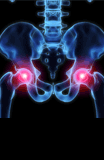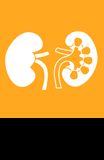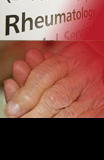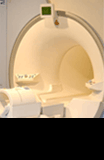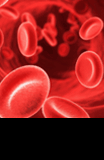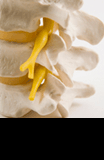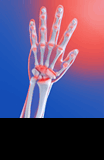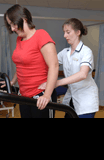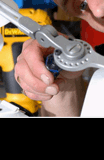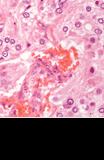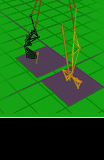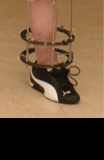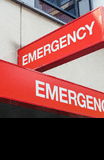There are many reasons why people living with a diagnosis of MND may want to travel to far-off destinations. Common reasons are to visit places that they have always wanted to see during their lifetime, to have a memorable holiday with a partner or family, or to visit distant friends and family.
The decision is usually entirely up to the individual, but we are often asked for our advice or a 'letter of support'. We therefore wanted to outline some of the challenges and practicalities to consider before undertaking such a trip. We do not wish to appear negative about the idea of travel - many MND patients have had entirely trouble-free and fulfilling trips abroad.
Insurance
Having comprehensive travel insurance is the single most important issue. A brief medical consultation can run to several hundred pounds, and a short stay in hospital can run to many thousands. This is a particularly severe issue in North America.
Many travel insurance companies will cover MND patients but crucially not for MND-related medical care. For those with significant disability it is hard to prove that hospital admission or other medical care was in no way related to, or more importantly, not complicated or prolonged by, the diagnosis of MND, and insurance companies may then refuse to pay. There may be a significant financial premium attached to ensuring that MND is fully covered.
Practicalities of foreign travel
The UK could perform a lot better in terms of disabled access, but there are many countries with far less well-developed facilities. Getting to the airport and on to the plane may be straight-forward, but do still inform the airline ahead of time, so that they can provide extra assistance getting to the gate and on and off the aircraft. People with disabilities now have EU-specified 'rights to fly'.
Accessible travel - tourismforall.org.uk
Think about contacting airport security before you travel, especially if you are taking any specialised equipment (e.g. NIV, see below) which may have to be cleared separately. There may also be a doctor who can provide advice when you call.
Disability facilities information at Heathrow: 020 8745 6155
Still leave at least an extra hour to clear security and remember there are restrictions on liquid volumes in hand luggage too, including medicines and gastrostomy (PEG) feeds.
It is also important to think about the on-board arrangements, particularly for eating and drinking, and using the loo during the journey. In respect of the latter a 'Convene' sheath device can be helpful for men.
At the other end, will there be help with luggage? What if your bag is lost or delayed - would there be vital equipment in it? How will you get to the hotel and are the facilities there adequate to meet your physical needs?
If you have communication difficulties then don't forget your Lightwriter. A handy tip is to purchase one of the small 'Point It!' picture books for travellers.
It is full of pictures of food, household items, buildings, vehicles, clothing - basically everything to ensure you can communicate quickly, especially in a foreign language country.
Immobility of travel
There is a small risk to all long haul travellers of deep vein thrombosis (DVT). MND patients with increased physical disability and restricted leg movements have a higher risk, although it is still very low overall unless you have had previous DVTs.
A DVT can be life-threatening if it goes to the lung (called a pulmonary embolism), and even if it remains confined to the leg, it requires prompt investigation and blood-thinning drugs for six months.
Wearing full-length compression stockings on the legs is a good idea. There is no solid scientific evidence that taking aspirin 75mg for three days either side of air travel is beneficial in preventing DVT, but many people do this as well as wearing stockings (unless aspirin is harmful for them of course.)
Respiratory symptoms and travelling with NIV
There are special considerations for those MND patients with respiratory weakness, and those established on non-invasive ventilation (NIV). The level of oxygen inside commercial aircraft is lower than that at ground level. In theory this could cause problems in a patient with significant diaphragm weakness.
Patients with significant breathlessness at rest or when eating/dressing, or who cannot lie flat at night, should have a respiratory assessment before contemplating flying. Oxygen therapy - which might be given in a well-meaning way by a crew member - can be potentially harmful to MND patients with respiratory weakness.
For those MND patients already established on NIV, it is best to continue to use it on board as you would normally i.e. always on when you are asleep. Another issue is ensuring uninterrupted power supply. Taking a spare battery is recommended, and appropriate adaptors. Let the airline know in advance and leave more time to clear security with the equipment.
Potential problem of repatriation
Any illness severe enough to require hospital admission for an MND patient is always very serious. If an admission to hospital occurs whilst abroad it might not be possible or practical to be repatriated by air.
This might cause significant distress to those back at home as well as the patient and their travelling companions stuck abroad. In the event of death there are mechanisms for repatriation but these are not always straight-forward and can be lengthy.
Take a letter
Having a statement on headed paper from your GP or Neurologist about your condition is a good idea - it will help at security checks.
Try out free online translators, so you can generate a document in any language explaining your condition if needed, for example, Bing.com/translator
If you have made specific Advance Directives about resuscitation then these should also be carried in written form on you.
Other sources of information
The MNDA has information about air travel and ventilation on its website:





